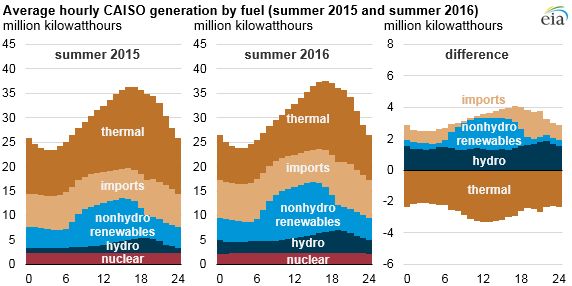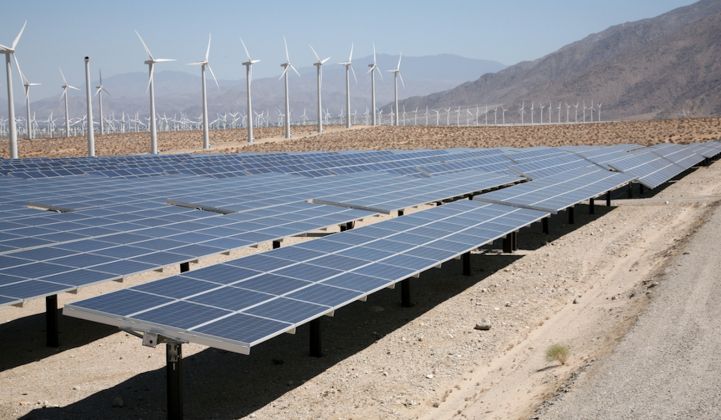California relied far more on renewable sources of electricity this summer than it did in 2015, as solar energy grew and hydroelectric resources made a rebound.
The increase in hydro and solar, along with more imported energy, meant that natural gas use was down by 20 percent from the previous summer, according to data from the U.S. Energy Information Administration.

In some ways, it is more of a back-to-normal scenario, rather than a new shift away from natural gas. Solar was up 33 percent from 2015, but much of the increase in natural-gas generation in recent years was to make up for the lack of hydropower, according to the California Independent System Operator.
Hydropower is still far below its historical highs of providing California up to 40 percent of its electricity, but it was expected to provide about 14 percent this summer, up from a low of about 6 percent.
Natural gas is still the primary source of baseload power for California, making up more than half the power mix. But that is highly variable, according to EIA, especially given the amount of solar on the system. During this summer, for instance, the hourly output of natural-gas generators ranged from less than 3 gigawatts in mid-June to more than 25 gigawatts in late July, with an average of 7 to 15 gigawatts per day.

During midday peaks this summer, hydro and solar provided more of California’s power than last year. And as solar power faded in the evening, imported power made up an increasing portion of the power mix compared to 2015.
On an average summer day, California’s grid operator imports about 6 to 9 gigawatts, mostly from the Northwest and Southwest. The Southwest provided nearly twice the imports of the Northwest for all of 2015, and about 27 percent of the Southwest’s power mix into California was coal. In contrast, the Northwest provides more renewables into California, mostly hydro and wind.
The shift to more renewables and demand-side resources, such as energy storage and efficiency, is likely only to increase in coming years. To manage the threats of rolling blackouts next year, Southern California utilities are investing in battery storage at record speed to accommodate the natural-gas limits that are expected from shutting down the natural-gas storage facility at Aliso Canyon.
More significantly, Pacific Gas & Electric has a plan to replace the state’s last nuclear power plant, 2.3-gigawatt Diablo Canyon, with a mix of carbon-free electricity and demand-side resources by 2025.



